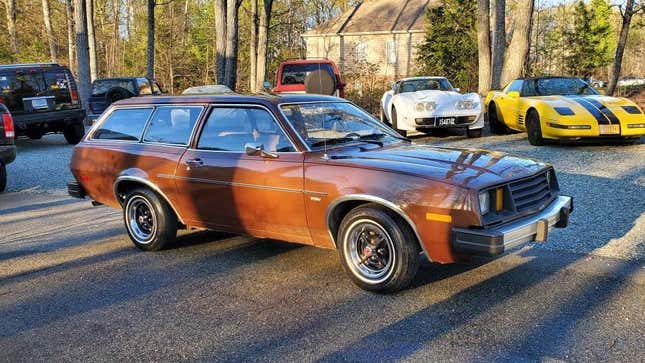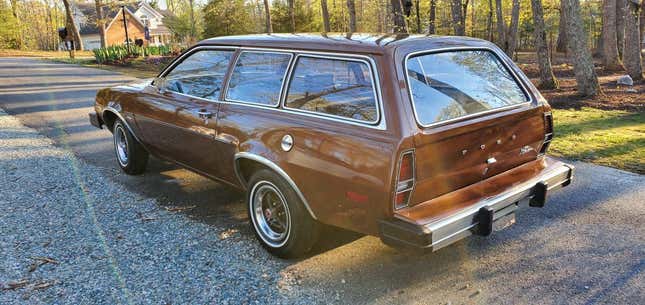
Being a 1980 model, today’s Nice Price or No Dice Pinto is the newest edition one could possibly buy, but it’s still heckin’ old. Let’s see if this time capsule is worth its asking price to open up.
Generally, anyone addressed as either Mister or Miss along with their first name is either a hairdresser or a kindergarten teacher. In the case of Mr. Norm, however, that generality was broken as he was a Dodge dealer and race car promoter.
The 2013 Mr. Norm 50th anniversary Dodge Challenger we looked at yesterday celebrated the five decades of history Mr. Norm brought to the car-buying and racing communities. At $100,000, its present owner won’t be celebrating a historic windfall any time soon. Not at least with the massive 97 percent No Dice loss that price earned in the votes and the vitriol spilled over the car itself in the comments.
Do you want to know another car that got a lot of negative press? That’s right, it was the Pinto! The butt of more jokes than any other car outside of the Yugo, the Pinto was in fact a fairly successful and innovative car for its time.

Introduced in 1971 as Ford’s import-fighter, the Pinto would feature a number of firsts for the company along its production run. It was the first domestic Ford to offer a belt-driven overhead cam engine and the first to use an innovative heat-cured vinyl seal for panel seams and joints in an effort to cut down road noise without resorting to heavy sound-deadening materials. It was also the first American Ford production car to offer rack and pinion steering.

Then, of course, came the debacle of the lawsuits regarding the design of the Pinto’s fuel tank position, and the danger it engendered in even minor rear-end collisions. We won’t go into it here, but suffice to say that, despite the design flaws which were driven by Ford’s interpretation of Federal crash standards, the Pinto suffered somewhat unfairly.
This 1980 Pinto Pony wagon hails from the model’s final year of production. Even then it came across as a ’70s throwback. The model would soon be replaced by the vastly more modern Escort which in its own first, would be Ford’s first American-made FWD car.
Despite the clouded history, there’s still a lot of appeal here, especially when presented in root beer brown and with rallye-style steel wheels. This being a late-in-the-game edition, it lacks the earlier Pinto’s handsome blade bumpers and wide-eyed front end. Instead, it has aluminum bumpers and fashionable-for-the-time rectangular sealed beams. Everything looks to be in very nice shape.

The interior likewise presents as well kept, although the black vinyl in beige surroundings of the color scheme is a little weird and the shift surround is not what the factory-installed. Still, that shifter works a four-speed manual and that’s bolted to a 2.3 liter “Pinto” four good for 88 horsepower. Yes, that’s the very same 2.3 that carried on in production for decades after the Pinto’s demise, powering everything from Rangers to — in turbocharged form — Mustangs and Thunderbirds.
The ad claims the car to be in “EXCELLENT condition” and says it has been admired at a number of car shows. There are 40,000 miles on the clock and the title is as clean as the car.

As cheap cars of their age, the Pinto was never intended to last forever. In fact, few cars from the ’70s really were able to stand the test of time. This one has, and for that reason alone, it’s a noteworthy survivor. With the model’s rich history — both good and bad — it’s also a notable conversation piece. What might that all be worth?
The seller is asking $7,500 for the car, or about half-again what it cost when new. What’s your take on this survivor Pony and that $7,500 asking? Does that seem like a deal to live out the Pinto fantasy? Or, is that price just so much horse feathers?
You decide!
Richmond, Virginia, Craigslist, or go here if the ad disappears.
H/T to Adam Kinsman for the hookup!
Help me out with NPOND. Hit me up at rob@jalopnik.com and send me a fixed-price tip. Remember to include your Kinja handle.